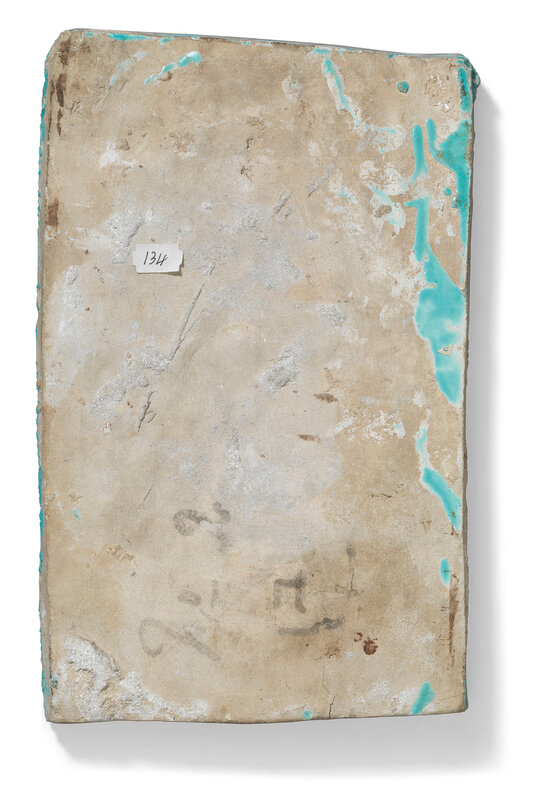A Kashan moulded turquoise mihrab tile, Central Iran, circa 1200
Lot 2. A Kashan moulded turquoise mihrab tile, Central Iran, circa 1200;13 1/8 x 8 3/8in. (33.3 x 21.2cm). Estimate GBP 20,000 - GBP 30,000 (USD 25,600 - USD 38,400). © Christie's Images Ltd 2020.
The central panel with lower arch supporting a mosque lamp on scrolling vine ground with kufic inscription, above this an arch formed of muqarnas filled with scrolling arabesques, the borders with kufic inscription within scrolling vine, minor chips to the edges, otherwise intact.
Provenance: Private Collection, Zurich (by repute)
With Momtaz Islamic Art, from whom acquired between 1987 and 1997.
The Collection of the Late Dr. Mohammed Said Farsi.
Note: By the thirteenth century, monochrome turquoise-glazed tiles moulded in the form of a mihrab were commonly used in mausolea and shrines. A notable feature of this group is the lamp at the centre of the architectural niche which calls to mind the Light Verse commonly inscribed on actual mosque lamps. The use of this imagery in mausolea and shrines participates in a visual vocabulary that reinforces the sacred text and serves to reinforce the sanctity of a person or place (Khoury, 1992, p.15).
The layout of our tile is closely related to a turquoise mihrab tile in the Harvard Art Museums (inv.no.1955.89), and its fine moulding is comparable to a further similar fragment in the Smithsonian (inv.no. F1908.168). The Harvard Art Museum example was most likely used to adorn the actual mihrab niches (Khoury, 1992, p.15). The similarity in form of our tile would suggest that it had a similar function, especially since its Qur’anic inscription refers to one of the times of prayer.
Christie's. Art of the Islamic and Indian Worlds Including Oriental Rugs and Carpets, London, 2 April 2020

/https%3A%2F%2Fprofilepics.canalblog.com%2Fprofilepics%2F1%2F0%2F100183.jpg)
/https%3A%2F%2Fstorage.canalblog.com%2F03%2F02%2F119589%2F96711876_o.jpg)
/https%3A%2F%2Fstorage.canalblog.com%2F11%2F31%2F119589%2F94773502_o.jpg)
/https%3A%2F%2Fstorage.canalblog.com%2F20%2F83%2F119589%2F94772815_o.jpg)
/https%3A%2F%2Fstorage.canalblog.com%2F26%2F72%2F119589%2F75604929_o.jpg)
/https%3A%2F%2Fstorage.canalblog.com%2F59%2F60%2F119589%2F26458628_o.jpg)




/http%3A%2F%2Fstorage.canalblog.com%2F87%2F28%2F119589%2F126222610_o.jpg)
/http%3A%2F%2Fstorage.canalblog.com%2F10%2F53%2F119589%2F126222564_o.jpg)
/http%3A%2F%2Fstorage.canalblog.com%2F46%2F69%2F119589%2F126222541_o.jpg)
/image%2F1371349%2F20240417%2Fob_9708e8_telechargement.jpg)